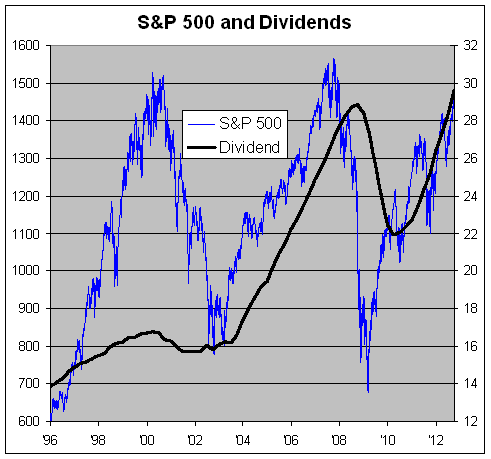Fourteen trillion dollars: That’s how much value has been returned to U.S. share prices since the five-year stock rally took off from the depths of the financial crisis in March of 2009.
The Dow Jones Industrial Average (DJIA) is up 25% year to date; the broader S&P 500 Index (SPX) has advanced 29%. Over the last 59 months, the S&P has averaged gains of about 17% annually.
S&P 500
Will this rally still have staying power in 2014? There are plenty of risks — the jobless rate is too high, Washington is a mess, the economy is expanding at a subpar level and there are always the unexpected geopolitical events that can unnerve investors.
Yet there’s also a strong case for optimism. Here are five reasons why this bull market may carry into 2014:
1. Corporate Profits: According to analyst estimates compiled by Bloomberg, profit margins will climb to 10.5% in 2014 and 11% in 2015. The previous record was 9.8% in July 2007.
2. Solid Revenue: S&P 500 revenue growth is forecast to reach 4.4% in 2015, according to the average of analyst estimates. Not spectacular to be sure, but solid.
3. Valuations: Anne Kates Smith with Kiplinger’s Personal Finance makes the case in her 2014 market outlook that U.S. stock prices are reasonably priced assuming 10% earnings growth in 2014. As she sees it:
By most measures, stocks are fairly priced, if not bargains. Given expected earnings growth of nearly 10% in 2014, we think stock prices could rise that much and perhaps more if investors again prove themselves willing to pay more for each dollar of corporate profits, ratcheting up the market’s price-earnings ratio. A reasonable range to expect would be 8% to 12% returns, including dividends. An 8% price gain would put the S&P 500 in the vicinity of 1,944, translating into roughly 17,300 on the Dow Jones industrial average; a 10% gain would put the S&P 500 at 1,980, the Dow a bit over 17,600. With dividends, the S&P’s returns could reach 12%.
4. The Fed: The U.S. Federal Reserve led by Janet Yellen (assuming she’s confirmed as expected) likely will move slowly to withdraw stimulus or raise interest rates until the economy is on solid footing.
The Fed indicated after its October meeting that it will continue with its $85 billion in monthly asset purchases until the unemployment rate and inflation meet its targets.
A recent Bloomberg survey of economists suggested the Fed would not consider lowering its monthly bond purchases until March at the earliest.
5. Housing: The latest data released for September reveals that U.S. home prices are growing at double-digit rates on an annualized basis. That’s good for household wealth and the stock market, all things being equal.
DISCLAIMER: The information in this material is not intended to be personalized financial advice and should not be solely relied on for making financial decisions. Please note that the information being provided is strictly a courtesy. Past performance is no guarantee of future results.




